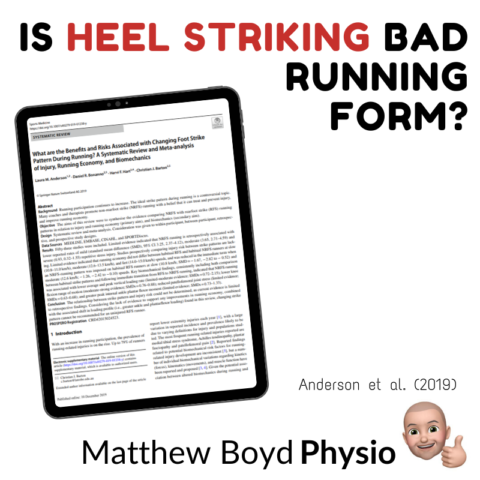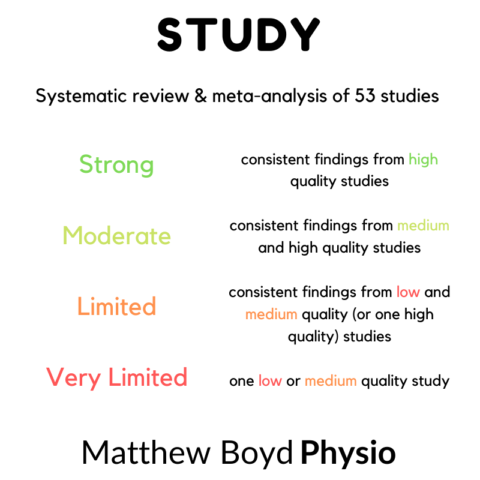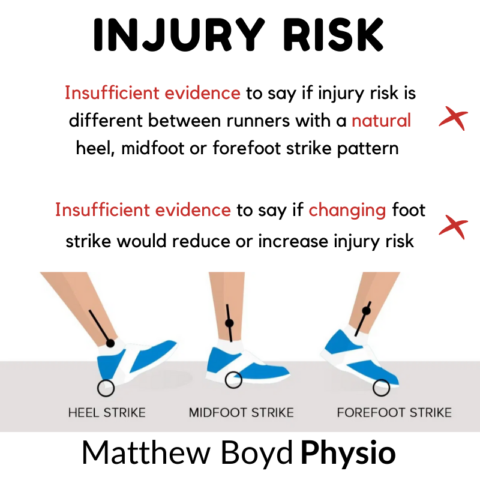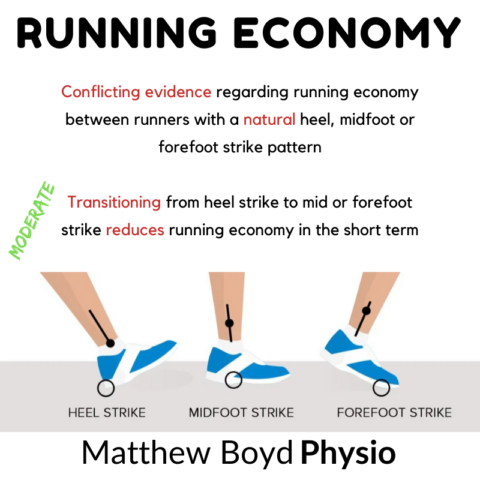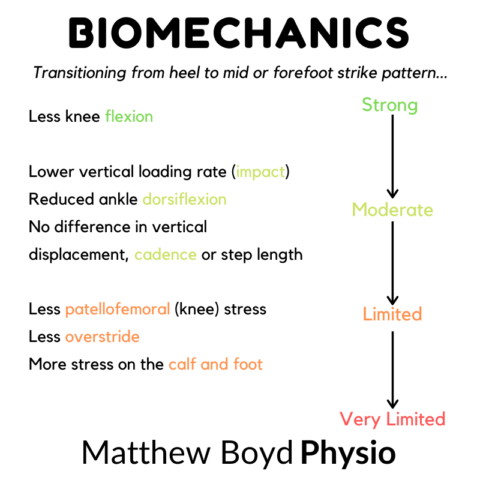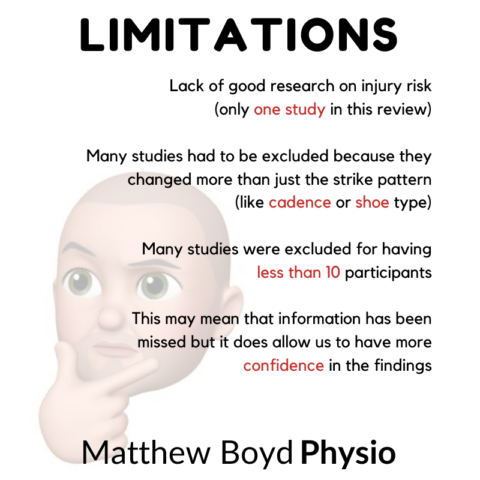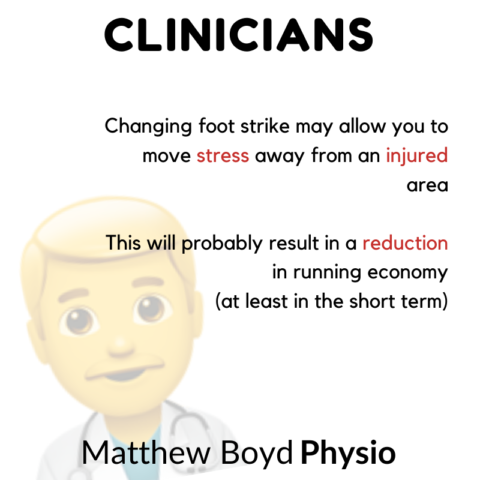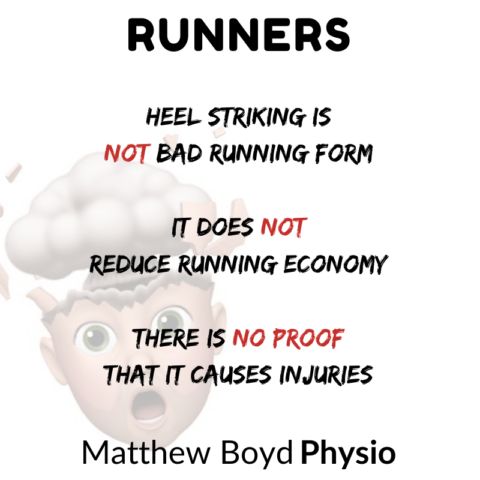In recent years heel striking has become a very popular topic of discussion among runners. Many “experts” have advocated against heel striking in favour of a midfoot or forefoot strike, myself included! We may have jumped the gun a little here. The idea was that landing on the midfoot or heel would allow you to use the muscles and joints of the foot to cushion the impact a little more. This could reduce something called vertical loading rate, which has been linked to injuries. Also, we thought heel striking would cause a braking force and reduce running economy (efficiency).
These are not bad theories and definitely worth investigating. Over the last few years there have been a number of studies doing just that. Just recently a group of researchers from La Trobe University in Australia reviewed all of the research comparing heel striking to midfoot or forefoot striking. They wanted to know if the research showed any links to injury or changes in running economy.
Study
- Fifty-three studies
- Systematic review and meta-analysis
- Evidence strength
- Strong – consistent findings from high quality studies
- Moderate – consistent findings from medium and high quality studies
- Limited – consistent findings from low and medium quality (or one high quality) studies
- Very Limited – one low or medium quality study
- Conflicting
Findings
- Injury Risk
- Not enough evidence to say if injury risk is different between runners with a natural heel, midfoot or forefoot strike pattern
- Not enough evidence to say if changing foot strike pattern would reduce or increase injury risk
- Running Economy
- Conflicting evidence regarding running economy between runners with a natural heel, midfoot or forefoot strike pattern
- Transitioning from heel strike to mid or forefoot strike reduces running economy in the short term (moderate)
- Biomechanics – Transitioning from heel to mid or forefoot strike pattern…
- Less patellofemoral joint stress (limited)
- More stress on the calf and foot (limited)
- No difference in vertical displacement, step rate (cadence) or step length (moderate)
- Less overstride (limited)
- Lower vertical loading rate (impact) (moderate)
- Reduced ankle dorsiflexion (moderate)
- Less knee flexion (strong)
- More quads and hams force
Limitations
- Studies prospectively comparing injury risk between strike patterns are lacking. Only one high-quality retrospective study in this review
- Many studies had to be excluded from this review because they changed more than just the strike pattern (like cadence or shoe type)
- Many studies were excluded for having less than 10 participants
- This may mean that data has been missed but it does allow us to have more confidence in the findings
Clinicians
- Changing foot strike may allow you to move stress away from an injured area
- This will probably result in a reduction in running economy
Runners
- Heel striking is not bad running form
- It does not reduce running economy
- There is no proof that it causes injuries
